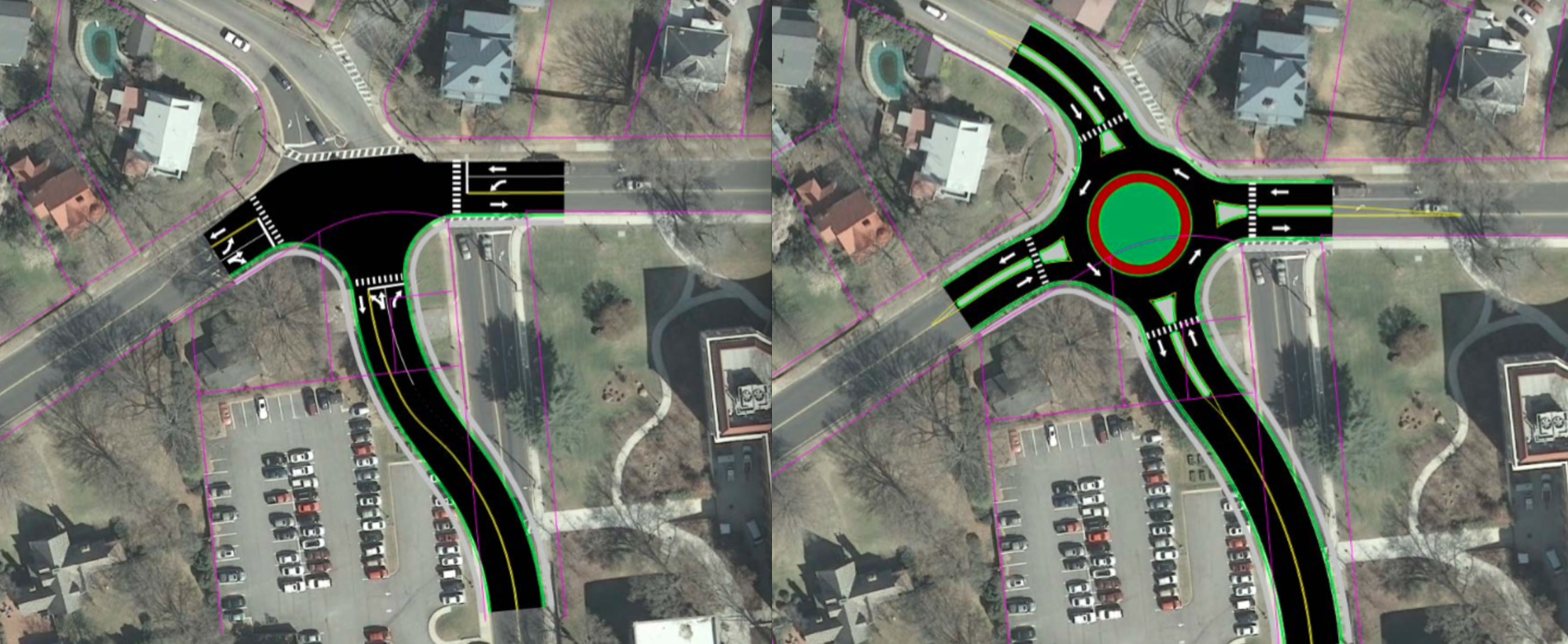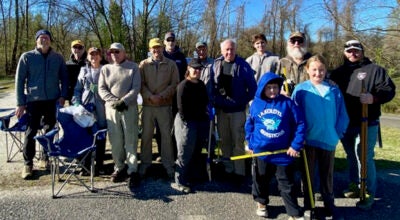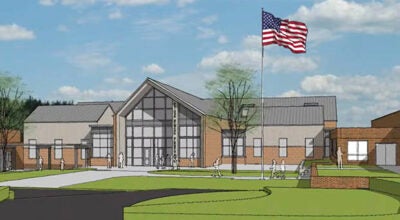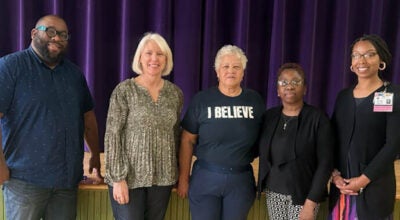Intersection options discussed
Published 6:29 pm Monday, February 20, 2017

- MCCORMICK TAYLOR Engineering firm McCormick Taylor presented three alternatives for improving the intersection at Oak Street, High Street and Griffin Boulevard on Thursday before more than 50 members of the community. The graphic at left depicts a signalized traditional intersection realignment, which could cost less and take less time to build than the roundabout alternative, depicted at right. Roundabouts, firm officials said, “reduce the number of conflict points … and they reduce the speed through an intersection as an average.”
More than 50 people gathered in the chambers of the Farmville Town Council on Thursday to learn more about the engineering study that will net a recommendation of how to improve the intersection at Oak Street, High Street and Griffin Boulevard in Farmville.
Officials with McCormick Taylor — the engineering firm conducting the study — led the over hour long discussion with the group, discussing the pros and cons of a realignment of the intersection and the potential for a roundabout.
The crowd posed numerous questions to McCormick Taylor senior engineer Don DeBerry, who fielded inquiries regarding pedestrian safety, foot traffic, costs, bicyclists, ecological impacts, lane width and speed.
“We’re here tonight to get your input,” DeBerry said, encouraging members of the community to fill out comment sheets in the back of the room.
“We want to get everybody’s input as we roll through this whole process. That’s why we’re here,” he said.
Before the meeting began people mingled, looking at displayed design alternatives on easels. The three graphics depicted the three alternatives the firm is studying: A, no change at intersection; B, a traditional realignment of the intersection with traffic signals; or C, a single-lane roundabout.
Faye Green, a member of a small group of people — who live in The Avenues — advocating for a roundabout project, handed out yellow pieces of paper containing facts about roundabouts.
Key project elements, DeBerry said, involve truck and pedestrian volumes, right-of-way impacts, utility impacts and environmental concerns and stakeholder communication.
The project’s approach, he said, is to conduct a traffic analysis, “then look at the engineering of all the alternatives we’re looking at,” noting the firm would perform a 24-hour traffic and pedestrian counts spanning two consecutive weekdays, a synchro analysis of the realigned intersection alternative and a highway capacity software analysis of the roundabout alternative.
“Again, looking at critical issues of reassigned truck volumes and pedestrian volumes, and then we will do a comparison of alternatives with the existing condition or the no-build alternative, which is always kept in the study of new alternatives,” Deberry said. “We’ll set all the design criteria, make sure that we have (Americans with Disabilities Act) compliance, consider the aesthetics and again compare the alternatives.”
“That’s our base; that’s what we’ve got,” DeBerry said of Alternative A, which is no change at the intersection. His presentation listed pros of the alternative as no impacts to right-of-way, utilities and environment, and a con as a poor level of service for pedestrians, trucks and vehicles.
A traditional realignment with a signalized intersection is Alternative B. “You just basically move it over so the signal can operate more efficiently. (It) should give us some improvement,” DeBerry said.
According to the presentation, pros of the realignment include the project being “a little cheaper” than a roundabout, fewer utility and drainage conflicts, signalized pedestrian movements and constructability.
A con of the alternative is “efficiency lower than a roundabout.”
Alternative C, the roundabout, came with pros of safety and less conflict points.
“Signalized intersections tend to generate a lot of rear-end collisions. Don’t see that with roundabouts, generally,” DeBerry said. “The operation, or que, of the traffic will generally be less. There will generally be less delay at an intersection. Again, these are generalizations, however.”
“We need to understand the conditions that exist out there today and what we’ll be analyzing,” he added.
Cons of the roundabout include costs, a larger footprint and maintenance of traffic during construction.
“They’re a little more to construct,” DeBerry said, noting, “while you’re building them can be tough because you’ve got to impact all four directions of traffic that are coming into this circle.” Initial driver confusion was also listed as a con of the project.
According to DeBerry, roundabouts have “lower maintenance costs, generally.”
“I use that intersection daily,” said L.D. Phaup, who serves on the town’s planning commission. “I’ve never really had a real problem up there other than coming down the hill from the hospital going to Longwood … I’m not sure I understand why we’re doing this, really.”
Responding, DeBerry said the current “off-set” intersection tends “to cause more delay than there has to be for vehicles “because you have to operate the signal in a particular manner. If you align the legs of an intersection, you can operate the signal more efficiently and you spend less time stopped.”
Attorney Harlan Horton said he crosses through the intersection probably 10 times a day, and has been doing so for 22 years. “What generally happens … once the light starts to change, everybody speeds up to try to get through the light. And then, quite frequently, as I’m coming down High Street, a big problem is people don’t pay attention to when they’re supposed to turn.”
Dr. Ann Yoelin lives in the house that sits on the knoll at the intersection.
“I have seen some scary stuff,” she said of traffic at the intersection — one she crosses on foot daily. “It’s kind of like a race sometimes to get off those lights. It’s very dangerous.”
“I’m concerned about pedestrian safety, and I think cross lights would be much more safe,” Robert Mottley said. “And, one of the fears that I’ve learned since Longwood has gotten bigger, and they’ve put crosswalks in, (pedestrians) give no regard to traffic. They step in that crosswalk, they’re going across.”
Greg Tsigaridas said he knew many who use side streets and travel on The Avenues and High Street “just to avoid that light.”
“The idea is you hope that the features of the roundabout will calm some traffic issues when people are speeding to get through the lights, which creates the situation where there is a higher probability that there could be an accident,” Horton said.
DeBerry said roundabouts “reduce the number of conflict points … So they reduce the number of crashes and they reduce the speed through an intersection as an average.”
He called the existing traffic pattern at the intersection “an unusual configuration,” noting his gut reaction was “either (alternative) would be better than the condition that exists there today. But I don’t know that yet.”
According to DeBerry, a traditional realignment would be easier as far as keeping traffic moving during construction.
He said, generally, a standard signalized intersection is “usually easier to maintain traffic during construction than a roundabout — generalization.”
He said a signalized traditional realignment could take about 10 months to complete, with a roundabout taking about 15 months.





